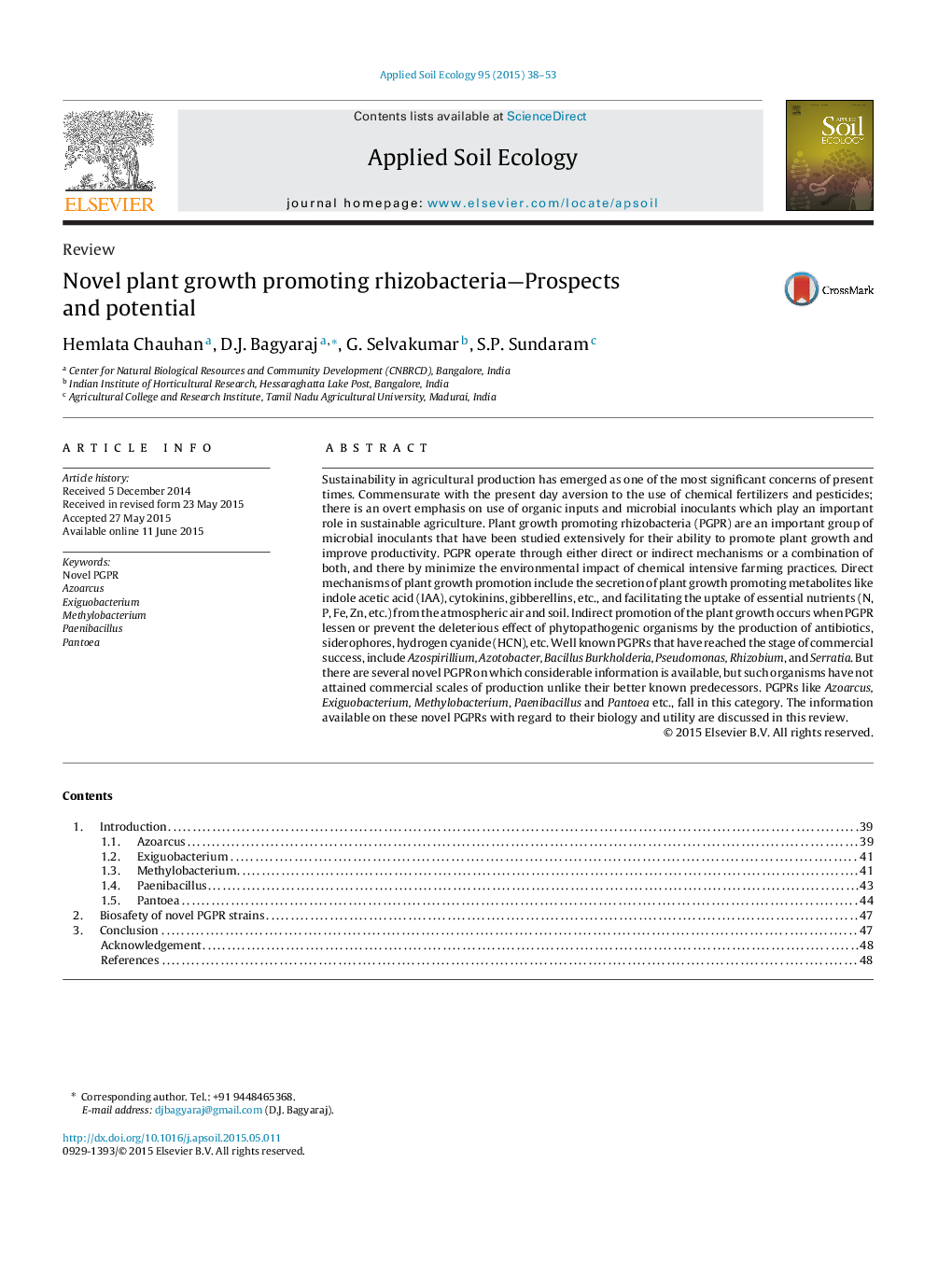| Article ID | Journal | Published Year | Pages | File Type |
|---|---|---|---|---|
| 4381948 | Applied Soil Ecology | 2015 | 16 Pages |
•The potential and prospects of five novel PGPR are reviewed.•PGPR reviewed: Azoarcus, Exiguobacterium, Methylobacterium, Paenibacillus, Pantoea.•Mechanisms of plant growth promotion by these PGPR are discussed.•The genome sequencing and biosafety issues are dealt with.•Future lines of work and need for commercialization are proposed.
Sustainability in agricultural production has emerged as one of the most significant concerns of present times. Commensurate with the present day aversion to the use of chemical fertilizers and pesticides; there is an overt emphasis on use of organic inputs and microbial inoculants which play an important role in sustainable agriculture. Plant growth promoting rhizobacteria (PGPR) are an important group of microbial inoculants that have been studied extensively for their ability to promote plant growth and improve productivity. PGPR operate through either direct or indirect mechanisms or a combination of both, and there by minimize the environmental impact of chemical intensive farming practices. Direct mechanisms of plant growth promotion include the secretion of plant growth promoting metabolites like indole acetic acid (IAA), cytokinins, gibberellins, etc., and facilitating the uptake of essential nutrients (N, P, Fe, Zn, etc.) from the atmospheric air and soil. Indirect promotion of the plant growth occurs when PGPR lessen or prevent the deleterious effect of phytopathogenic organisms by the production of antibiotics, siderophores, hydrogen cyanide (HCN), etc. Well known PGPRs that have reached the stage of commercial success, include Azospirillium, Azotobacter, Bacillus Burkholderia, Pseudomonas, Rhizobium, and Serratia. But there are several novel PGPR on which considerable information is available, but such organisms have not attained commercial scales of production unlike their better known predecessors. PGPRs like Azoarcus, Exiguobacterium, Methylobacterium, Paenibacillus and Pantoea etc., fall in this category. The information available on these novel PGPRs with regard to their biology and utility are discussed in this review.
